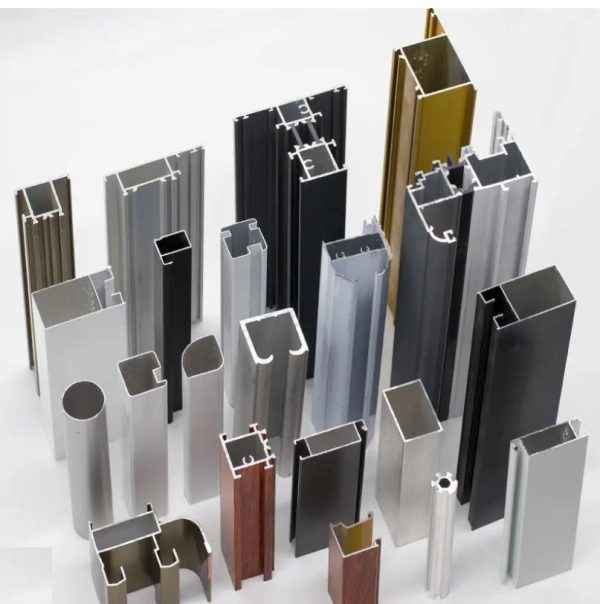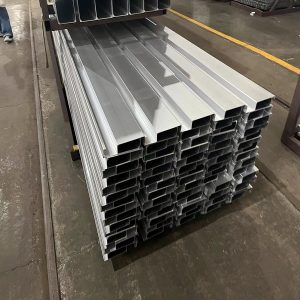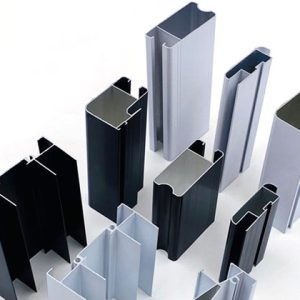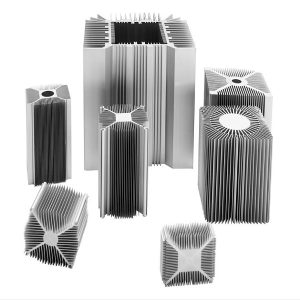Sự miêu tả
6061 và 6063 are two common types of hồ sơ nhôm used in various industries.
6061 aluminum profiles are known for their strength, Độ bền, và khả năng chống ăn mòn. They are often used in applications where high strength and stiffness are required, such as aerospace, tự động, and structural engineering. 6061 aluminum profiles have excellent machinability and can be easily welded, making them a popular choice for custom fabrication.
6063 hồ sơ nhôm, Mặt khác, are known for their excellent finishing properties and aesthetic appeal. They are often used in applications where appearance is important, such as architectural and decorative applications. 6063 aluminum profiles have good corrosion resistance and are easy to extrude, making them a popular choice for custom extrusions.
Both 6061 và 6063 hồ sơ nhôm are versatile and can be used in a wide range of applications. The choice between the two depends on the specific requirements of the application, such as strength, Độ bền, and appearance.
As a leading manufacturer of advanced and highly specialized aluminum extrusions profiles. Chúng tôi cung cấp một loạt các cấu hình nhôm tùy chỉnh, ép đùn nhôm, và ép đùn cấu trúc lớn. Các cấu hình nhôm là lý tưởng cho các công trình xây dựng máy móc và nhà máy. Ưu điểm lớn là trọng lượng nhẹ của cấu hình và công nghệ kết nối linh hoạt.
6061 6063 Hồ sơ nhôm nhà sản xuất RAYIWELL MFG từ Trung Quốc. Hồ sơ nhôm can be divided into 1024, 2011, 6063, 6061, 6082, 7075 and other alloy grades of aluminum profiles, of which 6 series is the most common. The difference between different grades is that the ratio of various metal components is different, except for commonly used hồ sơ nhôm for doors and windows In addition to architectural aluminum profiles such as 60 loạt, 70 loạt, 80 loạt, 90 loạt, and curtain wall series, there is no clear model distinction for industrial aluminum profiles, and most manufacturers process them according to the actual drawings of customers.
Hồ sơ nhôm have such surface treatment
1. Anodized aluminum
2. Electrophoretic coating of aluminum
3. Powder coated aluminum
4. Wood grain transfer aluminum
5. Fluorocarbon sprayed aluminum
6. Polished aluminum (divided into mechanical polishing and chemical polishing, among which chemical polishing has the highest cost and the most expensive price)
Hồ sơ nhôm are products born from aluminum alloys that are transformed into shaped objects through the extrusion process. Sự kết hợp các đặc tính vật lý độc đáo của nhôm chủ yếu phụ thuộc vào quá trình này. Nhôm ép đùn được sử dụng trong một số lĩnh vực vì kim loại này: Mạnh mẽ và ổn định.
Các loại profile nhôm
- Chùm rỗng.
- Hồ sơ vuông.
- Hồ sơ nhôm SD.
- Hồ sơ RCW.
- Phần cửa.
- Hồ sơ Louver.
- Phần chữ T
-
hợp kim và Fe với Mn mg Cr Zn Ti Impurity Al Unit Total 6063 0.2-0.6 <0.35 <0.1 <0.1 0.45-0.9 <0.1 <0.1 <0.1 <0.05 <0.15 Surplus 6061 0.4-0.8 0.7 0.15-0.4 <0.15 0.8-1.2 0.04-0.35 <0.25 <0.15 <0.05 <0.15 Surplus 6005 0.6-0.9 <0.35 <0.1 <0.1 0.4-0.9 0.1 <0.1 <0.1 <0.05 <0.15 Surplus 6060 0.3-0.6 0.35-0.6 0.1-0.3 <0.1 <0.1 <0.15 <0.05 <0.1 <0.05 <0.15 Surplus - Typical uses of 6061 Representative applications include aerospace fixtures, electrical fixtures, communications, and are also widely used in automated mechanical parts, precision machining, mold manufacturing, electronics and precision instruments, SMT, PC board soldering vehicles, vv.
Nhôm products made of aluminum and other alloying elements. Nó thường được chế biến thành vật đúc, vật rèn, lá kim loại, tấm, dải, ống, que, hồ sơ, vv, và sau đó được xử lý bằng cách uốn nguội, cưa, khoan, tập hợp, và tô màu. Nguyên tố kim loại chính là nhôm, thêm một số thành phần hợp kim để cải thiện hiệu suất của nhôm
Aluminum profile extrusion is a manufacturing process that involves the creation of complex shapes and designs using aluminum as the primary material. The process involves forcing molten aluminum through a die, which is a specially designed tool that shapes the aluminum into the desired profile.
The aluminum profile extrusion process begins with the creation of a die, which is typically made from steel or some other durable material. The die is designed to produce the desired shape or profile of the finished product. Once the die is created, it is mounted on a press and heated to a temperature that is high enough to melt the aluminum.
The aluminum is then loaded into a hopper, which feeds it into the press. The press applies pressure to the molten aluminum, forcing it through the die. As the aluminum passes through the die, it is cooled and solidified, forming the desired shape or profile.
After the aluminum has been extruded, it is cut to the desired length and may undergo additional processing such as surface finishing, machining, or assembly. The resulting aluminum profiles can be used in a wide range of applications, including construction, tự động, hàng không vũ trụ, and consumer products.






-
-
-